Friday, 9 September 2016
Resurrecting the Fortune Block
It was big news earlier this year. The iconic ca. 1882 Fortune Block at Main and St. Mary was was purchased by businessman John Pollard after the city upheld the building's heritage status, preventing its demolition.
You can read my full history of the building here. This is the Reader's Digest version:
The building was financed by Mark Fortune, the millionaire land speculator most famous for going down on the RMS Titanic. Just as the building was completed, though, he sold it to "Sandy" MacDonald, a businessman who built the adjoining Macdonald Block from which he created a grocery empire that is known today as Macdonalds Consolidated.
Over the decades, the Fortune Block has housed hundreds of small businesses, institutions and residents, including the first home of the School for the Deaf and the mother-daughter medical team of Dr. Amelia Yeomans, and Dr. Lillian Yeomans, believed to be the first women doctors in the city.
In the 1970s the upper stories, by then converted to residential units, were closed.
In the 1980s one of the main floor retail spaces became home to Times Change Cafe, which is now Times Change(d) High and Lonesome Club. The much-loved music venue is its only tenant.
The Fortune Block's purchase was a celebrated win for both heritage advocates and local music fans in the city. As I arrived for my tour, my first time in the upper floors of the building, I was curious to see what exactly was saved.
Cold and moisture are the enemies of buildings. In the case of the Fortune Block, the upper floors had not been occupied or heated in forty years. It was just the thickness of the glass, broken in places, keeping the elements and pigeons out.
I was expecting see heaved floors, fallen ceilings and most of the plaster gone from the walls. In other words, a total gut job.
Aside from the condition, I also wondered what the interior decor would look like.
The Fortune was constructed in 1882 - 83 and went from being primarily an office building to a residential one. It could have faced numerous unsympathetic interior renovations by owners wanting to update its look an function on the cheap by stripping it of wood trim, dropping the ceiling, bricking in window openings, selling off old staircases and doors, etc..
I am happy to say that I was pleasantly surprised on all counts !
The building's interior was in remarkably good condition for all that it has been through. The floors were even, walls were straight, even the plaster work, for the most part, had made it through with just a few cracks. I commented to my tour guide that I have been in occupied buildings that looked a lot worse.
The major repair issue was a broken roof beam that workers have already propped up in preparation for repairs.
The original interior, or at least a very early one, was also largely intact.
Many of the original doors and transoms were there, as was the beautiful staircase. The window openings were all intact as was a great deal of the decorative wood trim.
It really had the appearance that in 1900 or so, people just up and left.
The building held a few surprises.
The wide staircase, generous landings and hallways, and tall ceilings make you forget that you're in a small building. It got me to thinking about Mark Fortune's next building, the ca. 1905 Avenue Building. It was originally three storeys with the option to add four more, which happened in 1914. Perhaps he had grander plans for the Fortune Block?
A number of tricks were used to get as much light into the common spaces as possible. The transoms, a large skylight above the top of the stairs and windows in hallway walls would have made the public areas bright, even on a dismal day.
I was encouraged to hear that the owner wants to keep the original interior of the building as intact as possible, (of course, upgrading all of the major systems and adhering to modern fire regulations and other codes will have an impact.)
The original, oversized skylight will be replaced, (at some point it was shrunken down to about a third of its original size before finally being capped.) The staircase will be restored, the original window openings filled with new glass and the wood trim will remain.
Mark Fortune financed a building that would last more than 130 years, even with decades of neglect. It will be nice to see it finally brought back to life and ready for another century - or more - of life !
For more photos from my tour, see my Fortune Block Flickr album.
Subscribe to:
Post Comments (Atom)












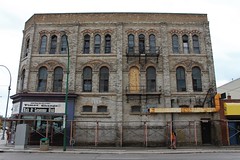
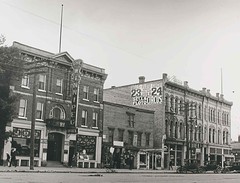
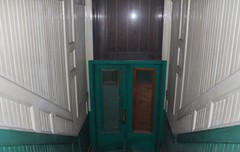
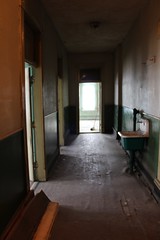
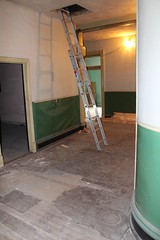
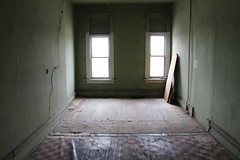
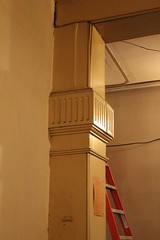
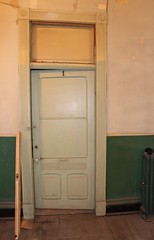
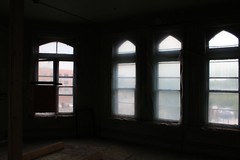
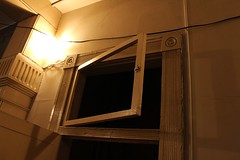
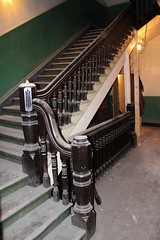
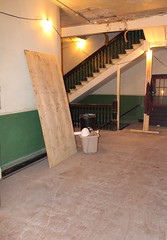
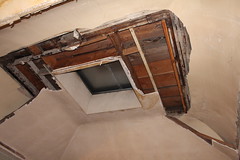

2 comments:
Thanks for the tour. I'm pleasantly surprised that the building is in such good shape considering how long it's been neglected. I'm also a bit surprised that a building like this in such a prime location was practically vacant for such a long time... it's nice to know that better things are in store, though.
Thanks for breathing life into the old buildings. Winnipeg is beautiful.
Post a Comment